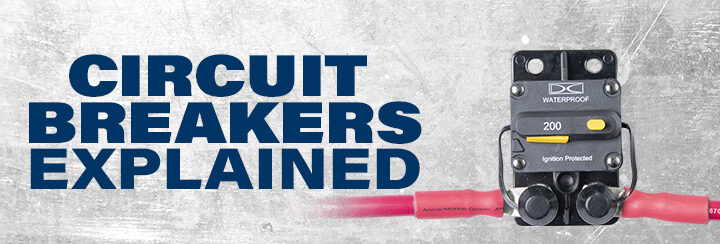Although there are many types of breakers, the main three we will go over are standard, high-amp, and blade. These automatic electrical switches are put in place in order to protect a circuit from excess current. A circuit breaker detects a fault and interrupts the current flow. A circuit breaker functions a lot like a fuse (see “What Is A Fuse?” for more info) except instead of needing to be replaced after a circuit interruption, a circuit breaker can be used time and time again. A breaker gets “tripped” when it is heated to extreme temperatures and the metal inside separates from its contact point. The circuit is reset when the metal cools down. This is how a breaker is built to last longer than a normal fuse. There are three ways that a circuit breaker will be reset to keep protecting and going strong!
These functions include:
- Automatic Reset: This type of breaker will recycle continuously when overcurrent does occur. It will deflect and separate the contacts when heated and will return to its original position once it cools.
- Modified Reset: This means that the breaker will remain in the off position, otherwise known as “tripped,” if there is power to the circuit. Removing the power will reset the breaker. Once the power is removed, the circuit breaker will reset. These types of circuit breakers contain internal resistors.
- Manual Reset: The breaker will stay open until the user manually reactivates the breaker either by lever or by indicator button.
Del City normally carries 12V DC (Direct Current) breakers. There are many types of breakers, the main three we will go over are standard, high-amp, and blade. Depending on the type, there may be certification requirements present as well in order to make sure that your breaker is working properly.
Standard Circuit Breakers
Del City carries Switch and Stud Mount (canned) breakers with panel and surface mount options. You can use a standard breaker in a variety of environments, they are very common. All of the sub-categories within standard circuit breakers are single pole. This means that the breaker has one hot wire (pole) as well as one neutral wire.
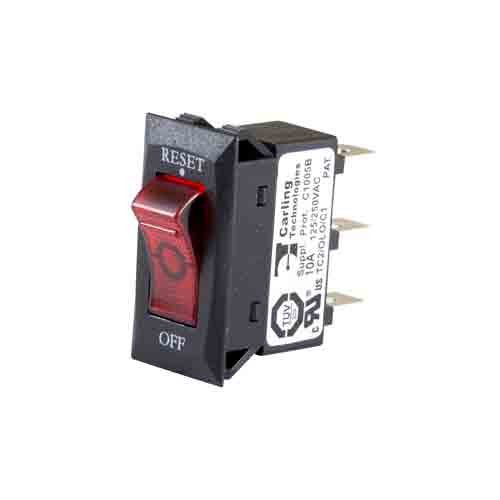
Switch Circuit Breaker
A Switch Circuit breaker is a breaker and switch combined into one convenient package. These are usually compact to facilitate use and save space on your panel. Only needing one product instead of two, reduces assembly costs. This is frequently used in household/commercial appliances, transportation, marine, telecommunications, exercise equipment, audio-visual, and more!
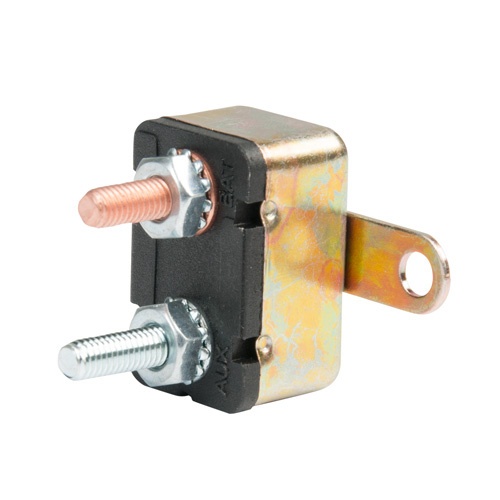
Stud Mount Breaker
A Stud Mount breaker (otherwise known as a canned breaker) is single pole and a thermal overload type of circuit protection. These are very diverse breakers as they can be used in applications such as marine, truck, portable generators, and trolling motors. They are available in either metal or plastic housings depending on specific needs as well as being available with or without a mounting bracket. When it comes to the difference between panel and surface mount options, the main deciding factor is the desired location of your breaker. If you are looking to attach to a flat location, the surface mount would be your best option. Conversely, if you are looking to attach your breaker to a circuit panel (utilizing multiple circuit breakers) where a flat surface is not present, a panel mount would be the choice for you.
Hi-Amp Circuit Breakers
A hi-amp environment is where circuit breakers really shine. Fuses may be able to cover a wide range of amperages as well but have nothing on breakers when it comes to the higher amps. If you were to need circuit protection for a major project that requires a lot of power, you need to use a Hi-Amp circuit breaker.
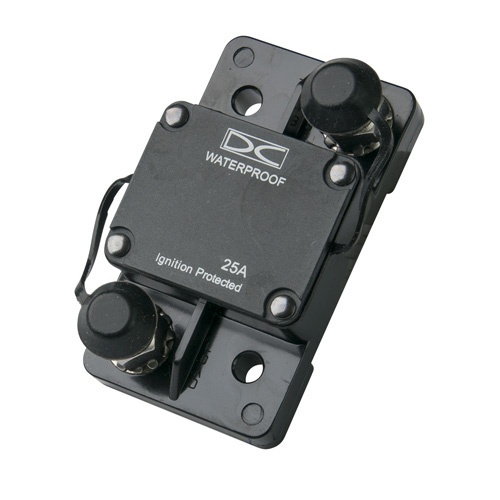
Hi-Amp Standard and Marine Breakers
Del City has a variety of Hi-Amp breakers that range from 25 amps all the way to 200! They are also available in all three reset styles in order to accommodate your specific needs. Because these can be so powerful, they are great for auxiliary and accessory circuit within automotive, recreational, and marine applications. With this kind of reliability, they can be trusted to protect from overloads or current shortages.
Blade Circuit Breakers
Blade circuit breakers are named for the general appearance of the breaker itself. As with other types, there is a housing. From this housing protrudes two “blades” which are then used to insert the circuit breaker into the desired location. The blade breakers follow a fuse footprint, making them incredibly versatile. For example, blade breakers can be used where usually a fuse would be present, such as a fuse block. All three types of resets are available with blade breakers. What makes blade type unique is the variety of sizes and functions that fit this general description.
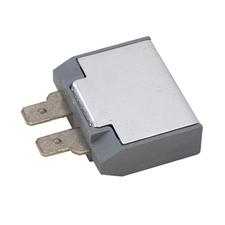
Maxi Fuse Breakers
For example, Maxi Fuse breakers are a type of blade breaker. This type combines a maxi sized housing and circuit breaker terminals. Again, following this footprint makes it more versatile. This allows it to be used in applications such as automotive, marine, trucks, buses, and portable generators.
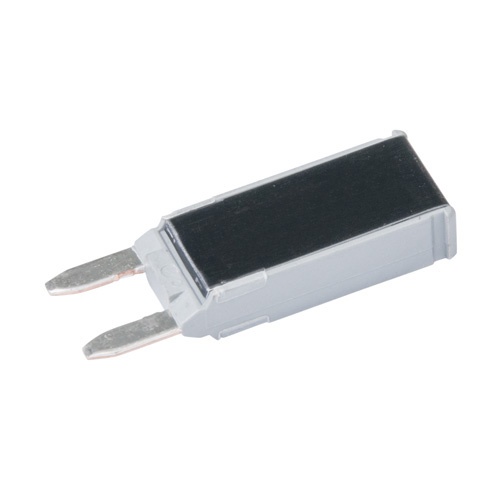
Mini Fuse Breakers
On the other side, Mini Fuse breakers are also categorized within blade style. These follow the same idea as a Maxi Fuse breaker, but instead follow the footprint of a mini fuse. This makes it ideal for an application where space is limited.
ATO/ATC Style Circuit Breakers
Del City also carries ATO/ATC Low Profile breakers, ATO/ATC Standard breakers, and Universal Blade-Style breakers. Although this may have differing names, they are all considered blade breakers within the ATO/ATC family. The Low-Profile breakers are ideal for situations where space may be limited and replacing a fuse on a critical accessory is the goal. The Blade-Style is available in automatic reset and manual reset. It has many diverse applications including automotive, marine, and portable generators.
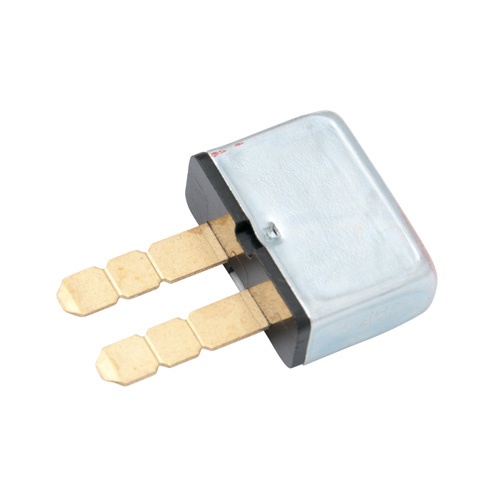
Universal Style Blade Breakers
Lastly, Universal Style blade breakers are a bit more unique. The blade design snaps off (as seen in the photo) in order to size the blade to the desired ATO/ATC panel. This makes it desirable for many uses when the necessary size is not quite known.
Circuit breakers are both a helpful and necessary tool to have in your arsenal. Want to see the complete variety that Del City offers? Head over to our website in order to learn even more! Still have questions? Don’t worry, our Technical Support is here to help! Just give 1.800.654.4757 a call and Del City will be more than happy to help you out!
